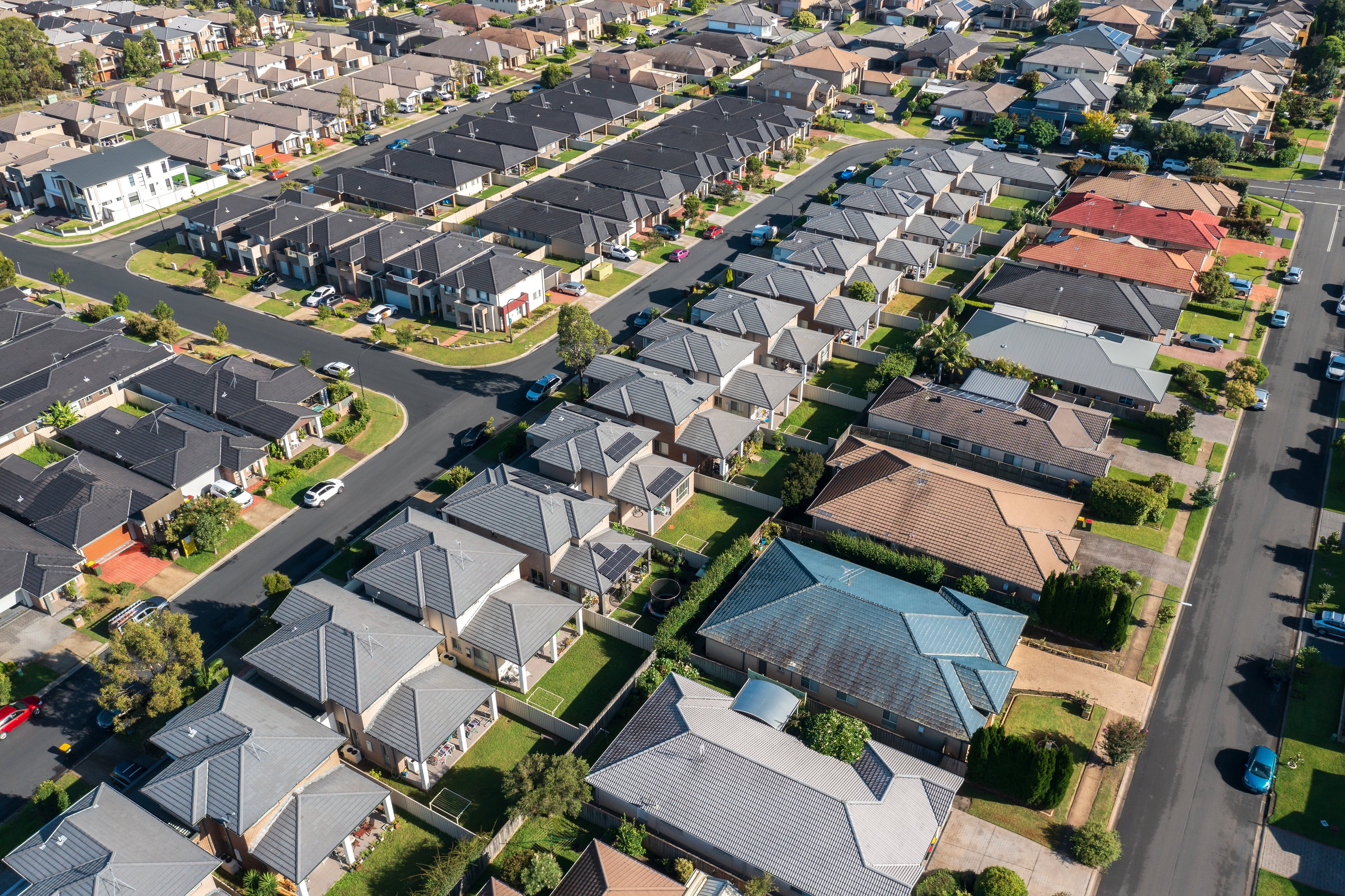Features > Property News & Insights > Investment News
Is Property Still a Lucrative Investment Option in Australia?

Image from Glen McCurtayne/Sydney Morning Herald
KEY POINTS
One thing that's absolutely certain is that property has stood the test of time as the best-performing asset class of choice for Australians. According to the Australian Council of Social Services (ACOSS) report, the highest 20% wealth group owns over 80% of all wealth in investment properties and shares.
However, right now, we are under rather unusual economic conditions, and it's worthwhile checking how the property market is performing currently so you can assess whether or not it should be a cornerstone of your successful investment portfolio. So, let's delve into the intricacies of the market so you are better equipped to build your wealth.
The Current State of Major Australian Cities
Major centres are a great place to look for economic indicators that can reveal the health of the property market overall. The CoreLogic Home Value Index for October reported that advertised listings have actually been increasing since early June. Over the four weeks to September 24, capital city listings were up 14% compared to the same period last year. This influx offers buyers a broader selection, potentially easing purchase urgency and bolstering negotiation power.
But this is not the case for Perth, where property listings are notably scarce, sitting 43.8% below the five-year average, while cities like Hobart, Canberra, and Melbourne have experienced a surge in available properties.
Analysing major cities’ dwelling value performances, Perth and Sydney stand out with 8.8% and 7.3% growth respectively, over the past year, followed by Adelaide and Brisbane with 5.0%. In contrast, Melbourne's growth has slowed to 1.5%. Sydney's Marrickville-Sydenham-Petersham and Melbourne's Whitehorse-East have emerged as frontrunners, recording annual growth rates of 15.2% and 7.9%, respectively. These areas are rapidly gaining attention as lucrative investment avenues.
.jpg?width=4950&height=2094&name=House%20Prices%20Graphs%20(image1).jpg)
It is interesting to note that although the estimated number of homes sold in the capital cities during the September quarter was 6.3% above the previous five-year average, it was down by 5.7% compared to the June quarter. This decline is attributed to mounting housing affordability concerns, stringent interest rates, and subdued consumer sentiment.
On the rental front, national rates have surged by 8.4% in the past year. This growth, however, is showing signs of deceleration, likely influenced by rental affordability constraints. Capital city vacancy rates have dwindled to a mere 1.0%, emphasising the demand-supply gap.
What’s Driving This Growth?
A significant combination of factors is contributing to the increase in property value that we're seeing across the major centres. The most significant of these is we are looking at record-high immigration (somewhere north of 400,000 is currently predicted by some experts) combined with a constrained housing supply; as inflation has pushed development costs up, many builders are struggling to get their projects off the ground, and far fewer dwellings are being constructed. Add to that the declining household size, and we have a perfect recipe for pushing house prices further and further in the years and decades to come.
The trajectory of home prices in 2024 will also be impacted by the possibility of interest rates declining. It is widely anticipated that interest rates will be reduced at some stage in 2024, leading to higher borrowing potential and lower costs associated with mortgage servicing. This is likely to contribute to a further upward trend in home prices.
Australian dwelling values have consistently risen for an eighth consecutive month, marking a 0.8% increase in September and a 3.9% growth year-to-date. CoreLogic's research director, Tim Lawless, anticipates a new national record by the end of November, underscoring the resilience of the Australian property market amidst significant economic challenges and global uncertainty.
Forecasted Growth in House and Unit Prices
The RBA's minutes from October 2023 suggest that the rise in housing prices might indicate that the current policy stance is not as restrictive as previously assumed. The national median dwelling values started to increase again in March 2023 and have risen by 5.1% since then. With peak interest rates and ongoing housing demand, this growth trend is expected to continue.
Andrew Boak, chief economist for Australia at Goldman Sachs, noted that the Australian housing market has proved much more resilient to higher interest rates. CoreLogic Economist Eliza Owen also noted that housing values would continue to rise in the near term. The current economic rebound is unparalleled, particularly given the Reserve Bank of Australia's highly forceful tightening measures. Over a period of 14 months, they raised interest rates by four percentage points, representing the most assertive tightening cycle witnessed in the last three decades.
According to KPMG, Sydney's house prices are expected to surge by 10.3% by mid-2025.
Melbourne, though starting at a modest 1.2% by December 2023, is projected to witness a hefty growth of 12.0% by June 2025. Additionally, unit prices are also showing a positive trajectory. By that same date of June 2025, Sydney's unit prices are forecasted to grow by 8.6%, while Melbourne's units are tipped to see a 7.0% rise.
.jpg?width=4950&height=2541&name=House%20Prices%20Graphs%20(image2).jpg)
.jpg?width=4950&height=2590&name=House%20Prices%20Graphs%20(image3).jpg)
All told, the Australian property market continues to shine as a beacon of stability and growth in the investment world. Its historical performance, combined with current trends and future projections, makes a compelling case for its inclusion in any well-rounded investment portfolio. As the landscape evolves, the enduring allure of Australian property remains steadfast.
Stay Up to Date
with the Latest Australian Property News, Insights & Education.




.png?width=292&height=292&name=Copy%20Link%20(1).png)
 SIGN UP FOR FREE NEWSLETTER
SIGN UP FOR FREE NEWSLETTER





.jpg?width=1920&height=1080&name=Warning%2c%20You%20Might%20Be%20Facing%20Higher%20Taxes%20Soon%20(1).jpg)





.png?width=1920&height=1080&name=Rate%20Drops%20Signal%20BIGGEST%20Property%20Boom%20in%20DECADES%20(1).png)

.jpg?width=1920&height=1080&name=Labor%20vs%20Liberal%20These%20Housing%20Policies%20Could%20Change%20the%20Property%20Market%20Forever%20(1).jpg)
.jpg?width=1920&height=1080&name=QLD%20Slashes%20Stamp%20Duty%20Big%20News%20for%20Investors%20%26%20Home%20Buyers%20(1).jpg)
.jpg?width=1920&height=1080&name=Trump%20Just%20Slapped%20Tariffs%20%E2%80%93%20Here%E2%80%99s%20What%20It%20Means%20for%20Australia%20(1).jpg)
.jpg?width=1920&height=1080&name=Federal%20Budget%202025%20More%20Debt%2c%20No%20Housing%20%E2%80%93%20Here%E2%80%99s%20What%20You%20Need%20to%20Know%20(1).jpg)
.jpg?width=1920&height=1080&name=Australias%20Housing%20Crisis%20is%20about%20to%20get%20MUCH%20Worse%20(New%20Data%20Warns).jpg)
%20(1).jpg?width=1920&height=1080&name=Australias%20RENTAL%20CRISIS%20Hits%20ROCK%20BOTTOM!%20(2025%20Update)%20(1).jpg)
%20(1).png?width=1920&height=1080&name=Is%20Adelaide%20Still%20a%20Good%20Property%20Investment%20(2025%20UPDATE)%20(1).png)
.jpg?width=1920&height=1080&name=RBA%20Shocks%20with%20Rate%20Cuts!%20What%E2%80%99s%20Next%20for%20Property%20Investors%20(1).jpg)
%20(1).jpg?width=1920&height=1080&name=I%20Predict%20The%20Feb%20Rate%20Cut%20(My%20Price%20Growth%20Prediction)%20(1).jpg)
.png?width=1920&height=1080&name=Why%20Property%20Prices%20Will%20Rise%20in%202025%20Market%20Predictions%20(1).png)
.jpg?width=1920&height=1080&name=Why%20Investors%20Are%20Choosing%20Apartments%20Over%20Houses%202%20(1).jpg)
.jpg?width=1920&height=1080&name=Why%20Rate%20Cuts%20Will%20Trigger%20A%20Property%20Boom%20(1).jpg)
.jpg?width=1920&height=1080&name=Retire%20On%202Million%20With%20One%20Property%20(Using%20SMSF).jpg)
.jpg?width=1920&height=1080&name=4%20Reasons%20Why%20You%20Should%20Invest%20in%20Melbourne%20Now%20(1).jpg)
%20(1).jpg?width=1920&height=1080&name=Old%20Property%20vs%20New%20Property%20(Facts%20and%20Figures%20Revealed)%20(1).jpg)
%20(1).jpg?width=1920&height=1080&name=Will%20The%20New%20QLD%20Govt%20Create%20a%20Property%20Boom%20or%20Bust%20(My%20Prediction)%20(1).jpg)
%20Scott%20Kuru%20(1).jpg?width=1920&height=1080&name=Inflation%20Hits%20Three-Year%20Low%20(Will%20RBA%20Cut%20Rates%20Soon)%20Scott%20Kuru%20(1).jpg)
.jpg?width=1920&height=1080&name=How%20to%20Buy%20Investment%20Property%20Through%20SMSF_%20The%20Ultimate%20Guide%20(1).jpg)
.jpg?width=1920&height=1080&name=Victoria%20Slashes%20Stamp%20Duty%20Melbourne%20Set%20to%20Boom%20Scott%20Kuru%20(1).jpg)
.png?width=1571&height=861&name=Are%20Foreign%20Buyers%20Really%20Driving%20Up%20Australian%20Property%20Prices%20(1).png)
.jpg?width=1920&height=1080&name=The%20Single%20Factor%20That%20Predicts%20Property%20Growth%20Regions%20(1).jpg)
%20Scott%20Kuru%20(1).jpg?width=1920&height=1080&name=My%20Prediction%20On%20Rates%20%26%20Negative%20Gearing%20(Market%20Crash)%20Scott%20Kuru%20(1).jpg)

-1.png?width=1920&height=1080&name=Major%20Banks%20Cut%20Rates%20Will%20RBA%20Follow%20Suit%20(Sept%20Rate%20Update)-1.png)
%20Scott%20Kuru-1.png?width=1920&height=1080&name=Rate%20Cut%20Coming%20What%20New%20Zealands%20Move%20Means%20for%20Australia%20(Sept%20Prediction)%20Scott%20Kuru-1.png)
%20(1).jpg?width=1920&height=1080&name=Buy%20when%20the%20interest%20rates%20are%20high!%20(Why%20you%20must%20buy%20now!)%20(1).jpg)
.jpg?width=1920&height=1080&name=Carms_Revised%20Taxes%20Due%20Aug%209%20YT%20Thumbnail02%20(1).jpg)
.jpg?width=1920&height=1080&name=Carms_Too%20Little%20Too%20Late%20Aug%207%20YT%20Thumbnail01%20(1).jpg)









.jpg?width=1920&height=1080&name=Carms_Rate%20Drop%20In%20July%20Jun%2010%20YT%20Thumbnail02%20(1).jpg)
.jpg?width=1920&height=1080&name=Carms_Own%20a%20Property%20V6%20Jun%205_YT%20Thumbnail%20(1).jpg)









.png?width=1920&height=1080&name=Artboard%201%20(3).png)






.jpg?width=1920&height=1080&name=YT%20thumbnail%20%20(1).jpg)

